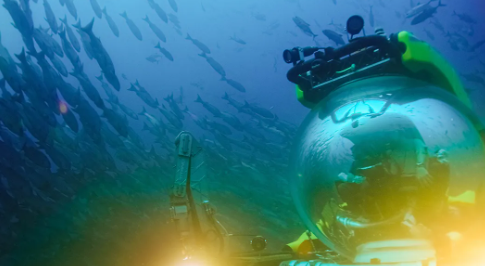Challenges and Opportunities in Deep-Sea Exploration with Submarines
The deep-sea is a largely unexplored frontier, holding many secrets and mysteries. With only a small fraction of the ocean floor mapped and explored, there is much to learn and discover in this vast and enigmatic realm. The use of submarines has allowed us to reach depths that were previously unreachable, but with this exploration comes its own set of challenges and opportunities.
Challenges:
- Pressure: The greatest challenge of exploring the deep-sea with submarines is the extreme pressure at these depths. At the deepest point in the ocean, the pressure is over 8 tons per square inch. Submarines need to be specially designed to withstand this pressure and keep their occupants safe.
- Energy: Deep-sea exploration requires a lot of energy, which can be a challenge for submarines. They need to carry enough power to operate their systems and keep the crew safe, while also maintaining buoyancy and maneuverability.
- Communication: Communication with the surface can be difficult at deep-sea depths. Submarines need to rely on specialized equipment to transmit data and communicate with the surface.
- Navigation: Navigation at these depths is also a challenge, as there are few landmarks to navigate by. Submarines need to rely on sophisticated sonar and mapping systems to navigate and explore the deep-sea.
Opportunities:
- Discoveries: The deep-sea holds many secrets and discoveries waiting to be made. Submarines allow us to explore areas that were previously inaccessible and discover new species and ecosystems.
- Research: Deep-sea exploration can provide valuable insights into the geology, biology, and chemistry of the ocean floor. This research can help us better understand the ocean and its role in the global ecosystem.
- Resource Exploration: The deep-sea may hold valuable resources, such as minerals, oil, and gas. Submarines can be used to explore and assess the potential for resource extraction at these depths.
- Conservation: Deep-sea exploration can also help us better understand the impact of human activities on the ocean and its inhabitants. This knowledge can help inform conservation efforts and protect vulnerable species and ecosystems.
In conclusion, deep-sea exploration with submarines presents both challenges and opportunities. The extreme pressures, energy requirements, communication difficulties, and navigation obstacles require specialized equipment and highly trained crews. However, the potential for discoveries, research, resource exploration, and conservation make this exploration worthwhile. As we continue to explore and learn about the deep-sea, we will undoubtedly gain a better understanding of this vast and mysterious frontier.


Post a Comment for "Challenges and Opportunities in Deep-Sea Exploration with Submarines"